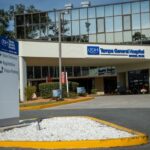The new code sets for ICD10 – one for reporting diagnoses and another for reporting inpatient procedures – includes eight times as many codes as the current code set, ICD-9-CM, and moves from numeric only to alphanumeric fields with up to seven characters. This creates a variety of challenges.
And, although General Equivalence Mappings (GEMs) exist to translate ICD-9-CM codes into ICD-10-CM codes, providers will still need to be able to assign codes using native ICD-10 codes.
As evidenced by the transition in Canada, providers can expect productivity losses across all care types and according to HIMSS, productivity in Canada has yet to rebound to pre-ICD-10-levels.
However, putting off the inevitable is not an option. With hospitals and health systems increasingly evaluated – and paid – based on reported patient data and the care they receive, ICD-10 and all it has to offer becomes even more imperative. And unlike HIPAA compliance, a provider can’t slowly transition to ICD-10 compliance since it immediately will impact the facility’s bottom line.
Physician Buy-In Lagging
Physicians are finding it hard to see the benefit of ICD-10 to their practice and/or patient care. And, much like with MS-DRGs and the effort needed to change the way physicians document, hospitals will find it hard to convince physicians why they need to care about ICD-10 and facilitate their involvement and buy-in. Without physician cooperation and understanding, other changes in workflow or systems to accommodate ICD-10 ultimately will fail. This would be fatal to a healthcare organization as it could mean delayed payments.
Hospital and health systems should make physician training and awareness a priority, sooner rather than later. Clinical team involvement and endorsement will improve ICD-10 success and boost overall staff morale, particularly with HIM, coders and CDS’s who need to work in concert with clinical teams to make this transition a success.
Training Must Extend Beyond the Coder
Training efforts to-date have fallen squarely on coders. However, as providers have experienced with MS-DRGs, effective clinical documentation and coding accuracy happens when coders work in concert with clinical teams – physicians and clinical documentation specialists.
Physicians, CDS’s and other members of the clinical team should have a training roadmap in place that ensures they understand the scope and depth of the ICD-10 transition and how this will impact their current clinical documentation process and program.
ICD-10 Readiness Should Begin Today
Hospitals should be preparing for ICD-10, implementing concrete assessment and training measures, from coders all the way to the physician. Some of the key measures include the following:
Biomedical Readiness Assessment
Effective ICD-10 training begins with accurate assessment of coders’ biomedical skills.
Clinical Documentation Assessment
Evaluating clinical documentation is important and this includes translating inpatient Medicare data from ICD-9 to ICD-10 and identifying the diagnoses and procedures that require additional specificity in ICD-10 and showing which MS-DRGs are most impacted.
ICD-10 Physician Awareness Training
This should include both a peer-to-peer general high-level overview of the impact of ICD-10 on physicians, followed by peer-to-peer physician education by specialty.
CDS/CIS Awareness Training
Awareness training for the Clinical Documentation Specialist/Clinical Information Specialist and coders should provide a detailed understanding of the impact of ICD-10 on clinical documentation improvement.
Advanced Inpatient Coding Training
Coders may have a basic level of training on ICD-10, but an advanced course on how to tie that basic training to clinical documentation improvement is important and helps mitigate the impact of ICD-10 on productivity.
Now is the time to begin the process of transitioning to ICD10 before it becomes too late. It takes 1270 days on average to get ready for ICD10 and there is less than 600 business days left.



























